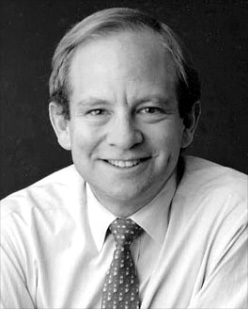Rattner leaves auto task force
Obama administration's point man on bailouts and bankruptcies is returning to private sector, but not his former firm.
 |
| Steve Rattner is leaving the Treasury Department's auto task force to return to the private sector. |
NEW YORK (CNNMoney.com) -- Steve Rattner, the Obama administration's point man on negotiations with General Motors and Chrysler through their bailouts and bankruptcies, is returning to the private sector.
Ron Bloom will become the administration's top auto adviser. Bloom is a former investment banker who worked as an adviser to the United Steel Workers union before joining the Obama administration.
"With the emergence of both General Motors and Chrysler from bankruptcy, we enter a new phase of the government's unprecedented and temporary involvement in the automotive industry," Treasury Secretary Timothy Geithner said in a statement.
Geithner said with GM's emergence from bankruptcy on Friday, Rattner decided to move back to the private sector and to New York, where he lived before joining the administration in late February.
"We are extremely grateful to Steve for his efforts in helping to strengthen GM and Chrysler, recapitalize GMAC, and support the American auto industry," said Geithner.
Rattner had been managing principal of Quadrangle Group LLC, a private investment firm with more than $6 billion of assets under management that specialized in investments in media and communications companies. Rattner is a former reporter for The New York Times.
A source close to Rattner told CNNMoney that he is not returning to Quadrangle.
Job completed: The auto task force oversaw the decision to pump a total of $50 billion of U.S. taxpayer money into GM and another $12 billion into Chrysler. The task force also oversaw billions in federal help for a rescue program for auto parts suppliers in March, although it turned down a request for additional help from that sector even as bankruptcies loomed.
Treasury also pumped billions into GMAC, which during this period went from primarily being the finance arm for GM to becoming a bank holding company that serves as the finance operation for both GM and Chrysler.
Rattner conceded last week in a conference call with reporters that it will be difficult to recoup much of the government help that flowed into the auto industry, particularly the more than $23 billion given to GM and Chrysler before their bankruptcy filing.
But he said he hoped that government stakes in both companies would eventually recapture some of that money, even if he conceded that the government's intention to sell those stakes as soon as possible worked against getting the best possible return.
"We are not here to get the very last dollar out of this investment the way we might have in our former private equity life," he said in a briefing with reporters the day after GM's bankruptcy plan was approved by the judge in that case.
The automakers had repeatedly sought government help in late 2008 and early 2009, hoping to be able to avoid bankruptcy filings. But on March 30, President Obama announced that the task force had concluded that neither company's turnaround plan would be enough to make them a viable company.
At that point, the move toward the two bankruptcy filings became virtually inevitable. Chrysler filed for bankruptcy on April 30, and GM filed on June 1.
Rattner led the strategy that called for both companies to make quick trips through bankruptcy, shedding their unprofitable plants and weaker dealerships as well as leaving their lenders with only pennies on the dollars.
Creditors at both companies cried foul, but the bankruptcy court endorsed both plans, pushing both companies through bankruptcy in about six weeks -- Chrysler emerging on June 10 and GM on July 10. ![]()

